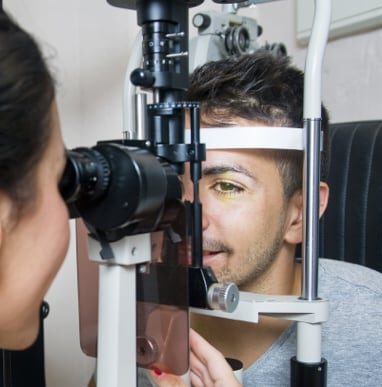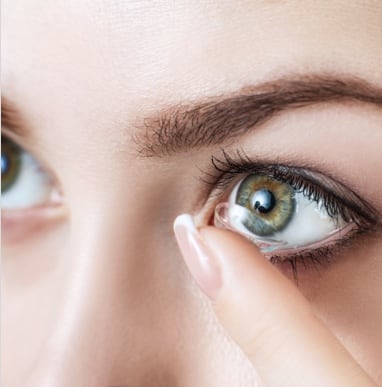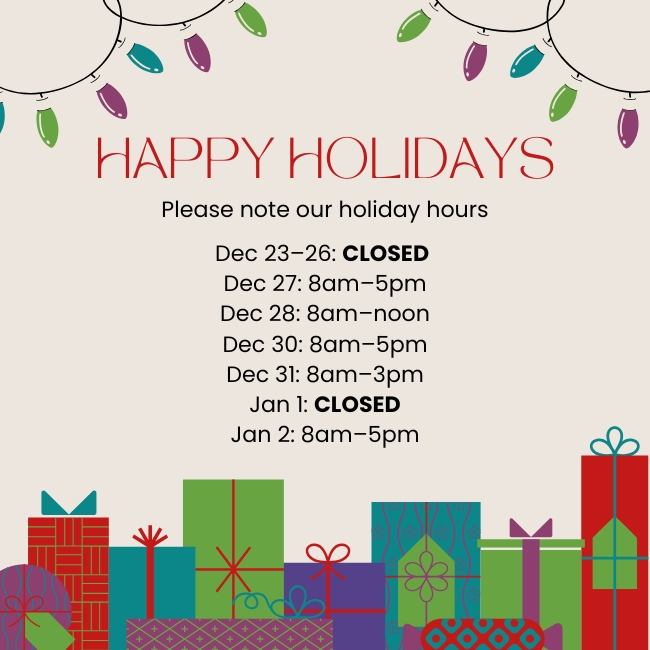Contact lenses and eyeglasses are the most popular ways to correct vision. Both methods redirect light so that it focuses on the retina, however, the mechanism by which they accomplish this differs.
Contact lenses sit directly on the eye’s surface, while glasses sit a few millimeters away from the eyes. This difference in placement means that the strength of each kind of prescription needs to be adjusted accordingly.
That’s why, after an eye exam, you’ll find that contact lenses and glasses prescriptions are slightly different. Substituting one prescription for the other isn’t recommended, as it may lead to headaches, dizziness, eye strain, and blurry vision.
Breaking Down Prescriptions
Generally, once patients finish their annual routine eye exam, they leave the appointment with an updated vision prescription that’s used to create their next pair of lenses.
This prescription includes the necessary parameters for correcting your vision with glasses or contacts. Once you understand what these numbers actually mean, it’s easier to follow changes in your vision.
A vision prescription reads from left to right and generally includes a sphere (SPH) value, a cylinder (CYL) value, an axis value, and, in some cases, an ADD value.
The sphere indicates the required lens power to correct refractive errors like myopia or hyperopia and is measured in diopters (D), which increase in 0.25 increments. Every vision prescription will include a sphere value, even at 0.00 D. A negative sign (-) signifies myopia, while a positive (+) sign indicates hyperopia.
The next column includes the cylinder value, which provides the lens power needed to correct astigmatism, an irregular curvature of the cornea or lens. This value is usually negative and, like the sphere, increases in 0.25 increments.
The final column in a standard vision prescription is the axis, which includes a number between 0 and 180 degrees. This value identifies where on the lens the astigmatism should be corrected.
A cylinder value will always be accompanied by an axis value. If there’s no astigmatism, there won’t be an axis value on your prescription. For example, a prescription with no astigmatism may simply read as -1.25 D, with no cylindrical or axis value.
Some prescriptions may have no spherical value but will include a cylinder and, consequently, an axis value. For instance, the prescription might read 0.00 D, -1.25 x 030.
A vision prescription that includes all three values might look as follows: -1.25 D, -0.25 x 030. The spherical value indicates moderate myopia, while the cylinder and axis values indicate light astigmatism.
For those who require vision correction for presbyopia, a final ADD value is included at the end of the prescription. This provides the additional lens power required for reading or multifocal lenses.
Contact lens and glasses prescriptions include the same base parameters, but these values differ slightly because of the different ways that glasses and contacts interact with your eyes.

Why Glasses & Contact Lenses Have Different Prescriptions
While glasses and contacts have different prescription values, the values are still similar overall. When comparing the prescriptions side by side, it’s common to notice a slight difference in the numbers.
Glasses sit a few millimeters away from the eyes, resting on the bridge of your nose, while contact lenses are placed directly on the eye’s corneal surface. The difference in their placement means that the lens power has to be adjusted accordingly.
Wearing lenses made with a vision prescription that’s too weak or strong can lead to eye strain, headaches, and blurry vision. Therefore, it’s necessary to have separate prescriptions for each form of vision correction. Substituting one for the other isn’t recommended.
A contact lens prescription also includes specific measurements that aren’t necessary for eyeglasses. Eyes come in a variety of sizes, and so do contact lenses. Additional parameters like base curve and diameter help the lens fit snugly over the corneal surface. Ill-fitting contacts can lead to discomfort and may affect visual clarity.
Importance of Proper Contact Lens Care
While both contacts and glasses are excellent ways to correct vision, contact lenses require further maintenance and care.
This is because they sit directly on the eye’s corneal surface and are directly exposed to the eye. This makes them susceptible to harmful buildups of dirt, protein, and bacteria. Improper use of contact lenses can lead to chronic discomfort, can affect visual clarity, and can increase the risk of infections.
That’s why, following proper contact lens wear and care is crucial for maintaining good ocular health.
- Wash your Hands: Before handling your lenses and touching your eye, wash your hands thoroughly with soap and water. After you wash your hands, be sure to dry your hands fully before handling the contact lenses.
- Follow the Wear Schedule: Follow the recommended wear schedule to avoid over-wearing your lenses to reduce the risk of complications.
- Clean your Contacts: Always use the recommended cleaning solution to rinse and store your lenses. Avoid using tap water or saliva, as these can introduce harmful bacteria to the lens. A bottle of contact lens solution should be replaced every 90 days.
- Clean your Contact Lens Care: After inserting your contacts, rinse and clean your contact lens case and set it out to dry before removing your lenses at the end of the day. Always add fresh contact lens solution when storing lenses away in the case.
- Storage: Store lenses in a clean contact lens case and replace the case every 90 days to reduce debris and bacteria buildup.
- Schedule an Annual Contact Lens Exam and Fitting: A contact lens prescription is only valid for a year. Annual exams and fittings help monitor any changes to your prescription and confirm that your eyes are healthy enough to continue wearing contacts.
Schedule an Appointment
Contact lenses require additional maintenance, care, and separate prescription from eyeglasses, but are a comfortable, hands-free way to experience clear vision.
Connect with our team at Vision Care Center to schedule an appointment for your contact lens exam and fitting.












